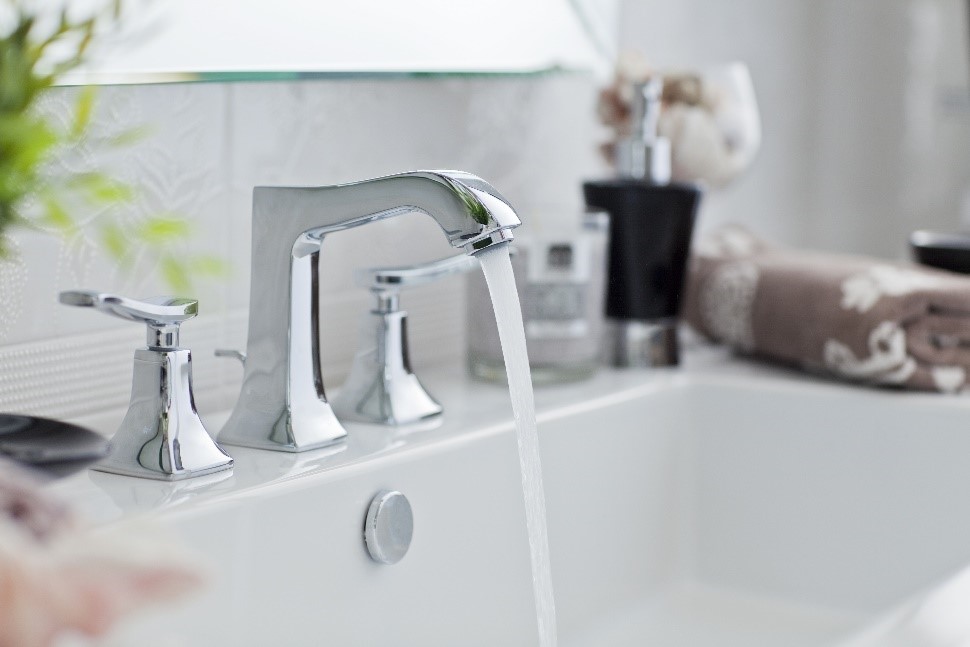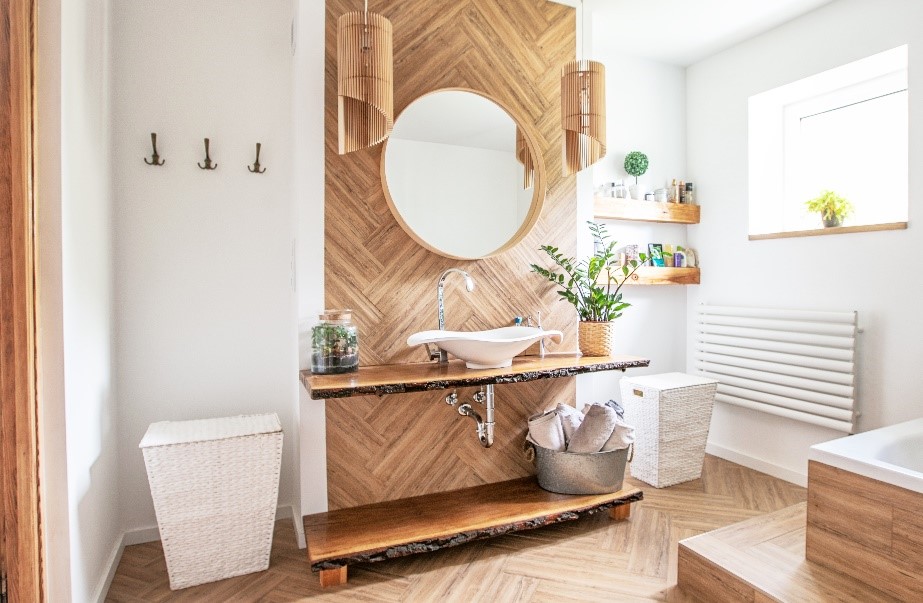
Whether you are looking to reduce your energy bill or are trying to improve your carbon footprint, the bathroom is a great place to start. An area of the house that’s in constant use and can take a lot of energy and water to power, there are some simple changes you can make here that will make a big difference to your usage.
In this article, we suggest some of the best ways to cut down both your water and energy usage in the bathroom.
Fix any leaks or dripping taps/showers
A small leak at the base of a faucet or a dripping bathroom tap might seem like a small annoyance, but, they can also be one place where you are using a surprising amount of water needlessly. In fact, a single dripping tap can waste over 5,500 litres of water a year! That’s a substantial amount and you’ll be paying for it, so it pays to fix an issue as soon as you spot it.
Turn down the lights
By now, we all know that switching to energy-efficient light bulbs is a great way to cut down your energy usage, however, if you and your family are still leaving the lights on when the bathroom isn’t in use, or you don’t need them then you aren’t being as efficient as possible. A good way to ensure minimum usage is to look at how your lights are set up in the bathroom to make sure that, when they need to be used, you’ve got fewer that need to be turned on.
This is something that Jo from Tea and Cake for the Soul suggests: “So many people leave the bathroom light on during the night using up valuable energy. Why not have a night light in your hallway instead, or install a sensor light that only comes in with movement?”
Lower your water pressure
Of course, we aren’t suggesting turning your water pressure down so that your shower is nothing more than a dribble, however, by using a lower water pressure when you can, it’ll mean that you are using less water. So, if your shower allows, don’t run it at full pressure and save yourself some water without letting down your experience. If you aren’t good at remembering this (or you have teenagers in the house who never seem to remember), why not fit a flow regulator in the shower so the use is limited by design?
Vicky from More Than a Mummy recommends a flow regulator for the shower: “If you have a bit more budget then adding flow regulators to your showers is another great way to use less water. A water-efficient showerhead can save as much as £185 a year on your bill!”
Another great way to lower your water usage is with a water displacement bag, a recommendation from blogger Emma Reed: “Purchasing a water displacement bag for every toilet in the home. This is basically a bag that sits inside the cistern of your toilet resulting in less water filling it up. Using one of these could save up to 3 litres of water for every flush!”

Take showers rather than baths
It’s a simple switch but having showers instead of baths can help to save a significant amount of water. Especially if you have a shared family bathroom, asking your children to shower rather than bath can make a real dent in your monthly water usage. Making sure your showers are short and efficient is also important – so be sure to limit your shower singalong list!
On showering, Vicky from More Than a Mummy tells us: “I start with the basics such as keeping an eye on the amount of time I leave the shower running. I don’t leave it running for a few minutes before I hop in and I’m careful not to spend too long in there, as every extra minute can use up a lot of water! Similarly, I always turn the tap off while brushing my teeth - even running it for those two minutes can really add up when you’re doing so twice a day.”
READ MORE: How to re-design your family bathroom
Use a smart meter
Smart meters can be a great way of tracking your energy usage in your home and not only saving money but cutting down on your carbon footprint by highlighting problem areas or times in your home. This way, you can track your day-to-day usage and build better habits at home.
Share the water
A technique that goes back many years and one that is still useful today can be sharing the water if you do run a bath. Especially good for parents of children who are too young to shower, sharing the bathwater can mean that, although you get more than one bath done, you only have to run one full tub (even if you do top up with some hot to keep it warm).
This is something that Sarah from The Good Thing Is Though does: “My water saving tip is an old fashioned one I’m afraid. I have three boys and at bath time the cleanest one (baby) goes in first. Then I top it up with a bit of hot water and the older two go in together for a splash around. I know I won’t be able to employ that strategy when they’re teenagers so I’m enjoying it while it lasts! Quick, convenient and saves money!”
Wash your towels less
For those with a lot of people in one household, it can seem like you’re always going through towels but trying to implement an efficient drying system after use means you can go longer between washes and save on the loads of washing down the line.
This is another recommendation from Vicky at More Than a Mummy, she tells us: “A great way to use less water is to keep your towels going for a few extra days before washing (so you’re not wasting water on the washing machine). Leaving them in a pile on the floor means they stay damp and aren’t pleasant to use, so I always make sure they’re hung up neatly on the radiator so they can be nice and dry for next time.”
Ways to save water and energy in your bathroom:
- Fix any leaks or dripping taps/showers
- Turn down the lights
- Lower your water pressure
- Take showers rather than baths
- Use a smart meter
- Share the water
READ MORE: How to make your home more eco-friendly
With these simple tips, you are able to cut down your water usage, lower your energy needs and in turn save money on your bills whilst helping to save the world.
For more tips, guides, and advice, make sure to visit our blog.
